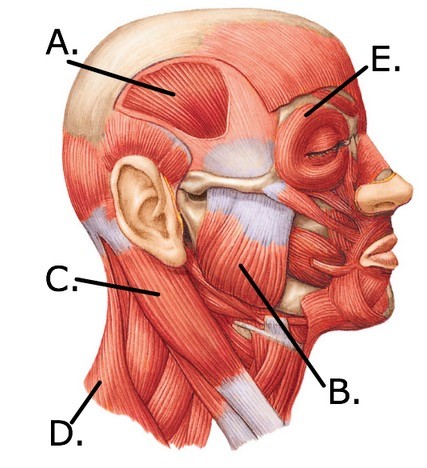When multiple repeating simple sugar molecules combine to form a larger molecule, it is called a polysaccharide.
Answer the following statement true (T) or false (F)
True
You might also like to view...
Identify the body cavity that contains the brain
What will be an ideal response?
Interpreting any score that falls within a numerical range (e.g., 80-95) as being equivalent is called
A. Cutscore B. Banding C. Generalization D. Selection ratio
 The figure illustrates a lateral view muscles of the head and neck. Which muscle is indicated by "D"?
The figure illustrates a lateral view muscles of the head and neck. Which muscle is indicated by "D"?
A. Sternocleidomastoid B. Trapezius C. Masseter D. Temporalis E. Orbicularis oculi
Which of these correctly describes a systemic response to infection?
A. Appetite generally increases compared to normal. B. The body's set point temperature is reset so that body temperature is maintained lower than normal. C. The liver retains iron and zinc so plasma levels are decreased from normal. D. There is reduced breakdown of triglycerides in adiopse tissue and a decrease in plasma free fatty acids compared to normal. E. Secretion of cortisol by the adrenal cortex is decreased.